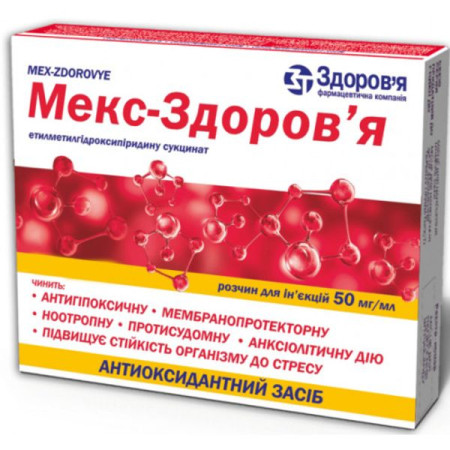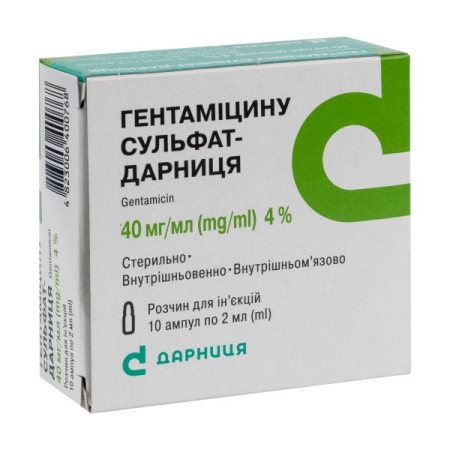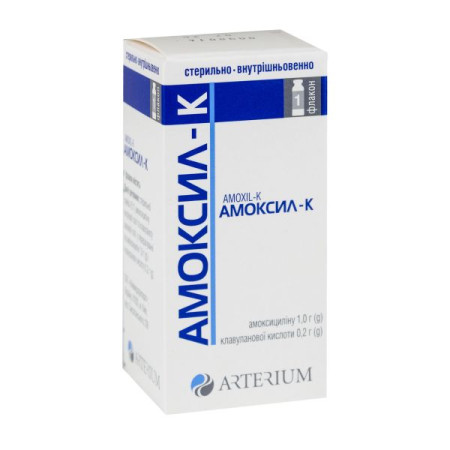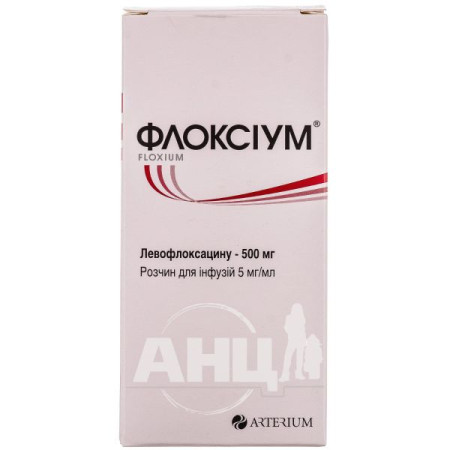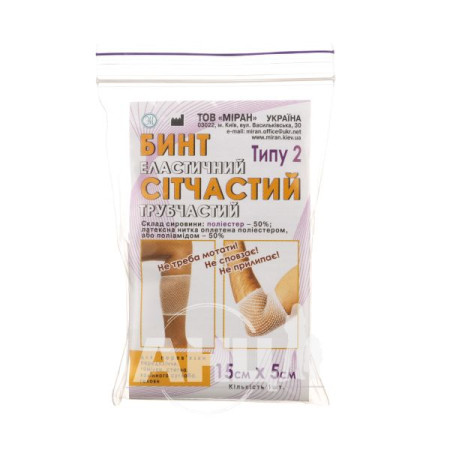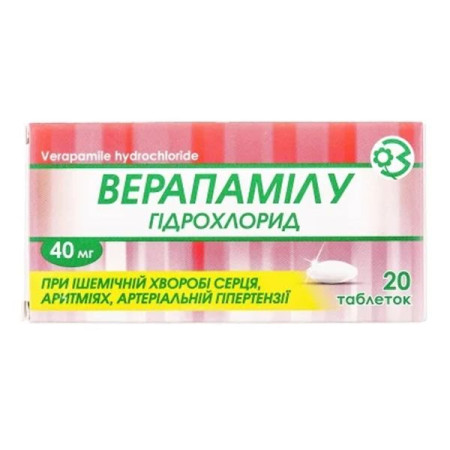Prescor concentrate for preparation of solution for infusions 2.5 mg/ml bottle 5 ml No. 1

Instructions for use: Prescor concentrate for preparation of solution for infusions 2.5 mg/ml, 5 ml vial No. 1
Composition
active ingredient: levosimendan;
1 ml of concentrate for solution for infusion contains 2.5 mg of levosimendan;
Excipients: povidone, anhydrous citric acid, anhydrous ethanol.
Dosage form
Concentrate for preparation of solution for infusions.
Main physicochemical properties: transparent solution from yellow, orange-yellow to orange.
Pharmacotherapeutic group
Medicinal products used in diseases of the cardiovascular system. Medicinal products used in diseases of the heart. Non-glycoside cardiotonics. Other cardiotonics. Levosimendan. ATC code C01C X08.
Pharmacological properties
Pharmacodynamics.
Levosimendan increases the sensitivity of contractile proteins to calcium by binding to cardiotroponin C in a calcium-dependent manner. Levosimendan increases the force of contractions but does not impair ventricular relaxation. In addition, levosimendan opens ATP-sensitive potassium channels in vascular smooth muscle, thereby stimulating vasodilation of systemic arteries, coronary arteries and systemic veins. Levosimendan is a selective inhibitor of phosphodiesterase III in vitro. In patients with heart failure, the positive inotropic and vasodilatory effects of levosimendan result in increased myocardial contractile force and reduced preload and afterload without adverse effects on diastolic function. Levosimendan activates damaged myocardium in patients after coronary angioplasty or thrombolysis.
Pharmacodynamic studies in healthy volunteers and patients with stable and unstable heart failure have shown a dose-dependent effect of levosimendan administered intravenously at a loading dose (3 to 24 mcg/kg) and as a continuous infusion at a dose of 0.05-0.2 mcg/kg. Compared with placebo, levosimendan increases cardiac output, stroke volume, ejection fraction, heart rate, and reduces systolic and diastolic blood pressure, pulmonary capillary wedge pressure, right atrial pressure, and peripheral vascular resistance.
Infusion of the drug increases coronary blood flow in patients recovering from coronary surgery and improves myocardial perfusion in patients with heart failure. These benefits are achieved without a significant increase in myocardial oxygen consumption. Treatment with levosimendan significantly reduces circulating endothelin-1 levels in patients with congestive heart failure. It does not increase plasma catecholamine levels at recommended infusion rates.
Pharmacokinetics.
The pharmacokinetics of levosimendan are linear in the therapeutic dose range of 0.05-0.2 μg/kg/min.
Distribution: The volume of distribution (Vss) of levosimendan is approximately 0.2 l/kg. Levosimendan is 97–98% bound to plasma proteins, mainly albumin. For OR-1855 and OR-1896, the extent of metabolite protein binding is 39% and 42%, respectively.
Metabolism: Levosimendan is metabolized primarily by conjugation to cyclic or N-acetylated cysteinylglycine and cysteine conjugates. Approximately 5% of the dose is metabolized in the intestine to aminophenylpyridazinone (OR-1855), which is metabolized by N-acetyltransferase after reabsorption to the active metabolite acetaminophenylpyridazinone (OR-1896). Concentrations of the metabolite OR-1896 are slightly higher in patients with genetically high levels of acetylation compared with those in patients with lower levels of acetylation. However, this is not relevant for the clinical hemodynamic effect at recommended doses.
Only two metabolites, OR-1855 and OR-1896, are found in significant amounts in the systemic circulation. These metabolites reach equilibrium in vivo through acetylation and deacetylation, which are regulated by N-acetyltransferase-2, a polymorphic enzyme. In patients with genetically low levels of acetylation, the metabolite OR-1855 predominates, while in patients with genetically high levels of acetylation, the metabolite OR-1896 predominates. The total amount of these two metabolites and the incidence of hemodynamic effects are similar in patients in both groups. These metabolites may have a long-term effect on hemodynamic parameters (for 7-9 days after cessation of a 24-hour infusion of levosimendan).
Patients with renal impairment. The pharmacokinetics of levosimendan have been studied in patients with varying degrees of renal impairment in the absence of heart failure. The exposure to levosimendan was similar in patients with mild to moderate renal impairment and in patients on haemodialysis. In patients with severe renal impairment, the exposure to levosimendan may be slightly lower.
Compared to healthy volunteers, the free fraction of levosimendan was slightly increased and the AUC (area under the plasma concentration-time curve) of the metabolites (OR-1855 and OR-1896) was 170% higher in patients with severe renal impairment and in patients undergoing haemodialysis. The pharmacokinetic effects of OR-1855 and OR-1896 in patients with mild to moderate renal impairment are expected to be less pronounced than in patients with severe renal impairment. The effect of haemodialysis on the pharmacokinetics of levosimendan has not been determined. While OR-1855 and OR-1896 are dialysable, their clearance is low (approximately 8-23 ml/min) and the overall effect of removing these metabolites during a 4-hour dialysis session is very low.
Patients with hepatic impairment. No differences in the pharmacokinetics or protein binding of levosimendan were observed in patients with mild to moderate hepatic cirrhosis compared to healthy volunteers. The pharmacokinetics of levosimendan, OR-1855 and OR-1896 are similar to those in healthy volunteers and patients with moderate hepatic impairment (Child-Pugh class B), except that the half-life of OR-1855 and OR-1896 is slightly increased in patients with moderate hepatic impairment.
Children: Limited data suggest that in children (aged 3 months to 6 years) the pharmacokinetics of levosimendan after a single dose are similar to those in adults. The pharmacokinetics of the active metabolite have not been studied in children.
Population analysis did not reveal an effect of age, ethnicity or gender on the pharmacokinetics of levosimendan. However, the same analysis revealed that the volume of distribution and total clearance depend on the child's body weight.
Indication
Short-term treatment of acute decompensated chronic heart failure of severe severity when traditional therapy is ineffective and in conditions where inotropic support is necessary.
Contraindication
- Hypersensitivity to levosimendan or to any of the excipients.
- Severe hypotension and tachycardia.
- Significant mechanical obstructions that affect the filling of the ventricles of the heart with blood and/or impede the outflow of blood from them.
- Severe renal impairment (creatinine clearance < 30 ml/min).
- Severe liver dysfunction.
- History of torsades de pointes ventricular tachycardia.
Interaction with other medicinal products and other types of interactions
Levosimendan should be used with caution simultaneously with other intravenous vasoactive drugs due to an increased risk of developing arterial hypotension.
Prescor can be used without loss of efficacy in patients taking β-blockers and digoxin. Concomitant use of isosorbide mononitrate and levosimendan in healthy volunteers resulted in significant potentiation of orthostatic hypotension.
Application features
The initial hemodynamic effect of levosimendan may cause a decrease in systolic and diastolic blood pressure, therefore levosimendan should be used with caution in patients with low systolic and diastolic blood pressure or at risk of episodes of hypotension. Severe hypovolemia should be corrected before levosimendan infusion is started. If excessive deviations in blood pressure or heart rate are observed, the infusion rate should be reduced or stopped.
The haemodynamically beneficial effects on cardiac output and end-capillary pressure persist for at least 24 hours after cessation of the 24-hour infusion. The exact duration of all haemodynamic effects has not been determined, but generally the effects persist for 7 to 10 days. This is partly due to the circulation of the active metabolite, the plasma concentration of which reaches a maximum approximately 48 hours after the end of the infusion. Non-invasive monitoring is recommended for at least 4-5 days after cessation of the infusion until blood pressure begins to rise again after a period of maximum reduction. The monitoring period may be longer than 5 days if the reduction in blood pressure is ongoing, but may be shorter than 5 days if the patient has stabilised. A longer monitoring period is recommended for patients with mild to moderate hepatic or renal impairment.
Infusion of the drug may lead to a decrease in serum potassium concentrations. Therefore, it is necessary to correct low serum potassium concentrations before administration of the drug and to monitor serum potassium levels during treatment. As with other drugs for the treatment of heart failure, levosimendan infusions may be accompanied by a decrease in hemoglobin and hematocrit, so caution should be exercised when used in patients with ischemic heart disease and concomitant anemia.
Infusion of the drug Prescor should be carried out with caution in patients with tachycardia or tachysystolic form of atrial fibrillation or potentially life-threatening arrhythmias.
Patients with sustained ventricular tachycardia, non-sustained tachycardia not associated with reperfusion, or life-threatening arrhythmia should be treated for the arrhythmia prior to initiating therapy.
Experience with repeated administration of levosimendan is limited. Experience with the administration of other vasoactive agents, including inotropic agents (except digoxin), concomitantly with levosimendan or following levosimendan infusion is limited. The benefits and risks of concomitant use should be assessed for each individual patient.
Prescor should be administered with caution and with careful ECG monitoring in patients with coronary ischemia, prolonged QT interval regardless of etiology, or in case of concomitant administration with drugs that prolong the QT interval.
Prescor should be used with caution in patients with tachycardia, atrial fibrillation, rapid ventricular response, or potentially life-threatening arrhythmias.
The use of levosimendan in cardiogenic shock has not been studied.
There are no data on the use of levosimendan in the following disorders: restrictive cardiomyopathy, hypertrophic cardiomyopathy, severe mitral valve insufficiency, myocardial rupture, cardiac tamponade, right ventricular infarction.
There is only limited experience in the following cases: acute heart failure due to non-cardiac causes, serious deterioration of heart failure after surgery and severe heart failure in patients awaiting heart transplantation. Therefore, special precautions are necessary.
Prescor contains 785 mg/ml of ethanol as an excipient, so the use of the drug may be harmful to patients with alcoholism. Caution should be exercised when using the drug in pregnant and breastfeeding women, children, and patients with liver disease or epilepsy.
Use during pregnancy or breastfeeding
There is no experience with the use of levosimendan in pregnant women. Levosimendan should be used during pregnancy only if the expected benefit to the woman outweighs the potential risk to the fetus.
Since it is not known whether levosimendan is excreted in breast milk, women taking the drug should refrain from breastfeeding.
Ability to influence reaction speed when driving vehicles or other mechanisms
Given the patient's condition for which the drug is prescribed, it is not expected that the patient will be able to drive vehicles or other mechanisms.
Method of administration and doses
Prescor is intended for use in specialized medical facilities only. It can be used in hospitals where there is the necessary equipment for monitoring and assessing the patient's condition and the staff is experienced in the use of inotropic agents.
The concentrate is sterile. The concentrate must be diluted before administration. Dilution should be performed under aseptic conditions.
Prescor infusion solution is intended for administration into central and peripheral veins.
As with all parenteral medicinal products, the diluted solution should be inspected visually for particulate matter and discoloration prior to administration.
The dose and duration of treatment are determined individually, according to the patient's clinical condition and response to treatment.
Treatment should be initiated with a loading dose of 6-12 mcg/kg administered over at least 10 minutes followed by a continuous infusion rate of 0.1 mcg/kg/min. A reduction in the loading dose to 6 mcg/kg is recommended if concomitant intravenous vasodilators and/or inotropic agents are used at the start of the infusion. Higher loading doses will result in a greater hemodynamic response, which may be associated with a transient increase in adverse reactions. The patient's clinical response to treatment is assessed at the time of the loading dose or within 30-60 minutes of the dose adjustment.
The recommended duration of administration in acute decompensated severe chronic heart failure is 24 hours. No signs of habituation or rebound phenomena have been observed after discontinuation of the drug. Hemodynamic effects persist for at least 24 hours and may be observed for up to 9 days after discontinuation of the 24-hour infusion.
Elderly patients: No dose adjustment is required.
Patients with renal insufficiency. Prescor should be administered with caution to patients with mild to moderate renal impairment and should not be used in patients with severe renal impairment (creatinine clearance < 30 ml/min).
Patients with hepatic impairment. Prescor should be administered with caution to patients with mild to moderate hepatic impairment and should not be used in patients with severe hepatic impairment.
Re-administration. Experience with re-administration is limited. Experience with the administration of other vasoactive agents, including inotropic agents (except digoxin), concomitantly with levosimendan or following levosimendan infusion is limited. In the REVIVE study, the lowest loading dose of 6 mcg/kg was used with concomitant vasoactive agents.
To prepare a solution for infusion at a concentration of 0.05 mg/ml, mix 10 ml of concentrate with 500 ml of 5% glucose solution. Table 1 shows the infusion rates for a solution at a concentration of 0.05 mg/ml for a loading dose and a maintenance dose.
Table 1
| Patient body weight, kg | Loading infusion rate for at least 10 minutes (ml/h) | Maintenance infusion rate (ml/h) | |||
saturation dose 6 mcg/kg | saturation dose 12 mcg/kg | 0.05 mcg/kg/min | 0.1 mcg/kg/min | 0.2 mcg/kg/min | |
| 40 | 29 | 58 | 2 | 5 | 10 |
| 50 | 36 | 72 | 3 | 6 | 12 |
| 60 | 43 | 86 | 4 | 7 | 14 |
| 70 | 50 | 101 | 4 | 8 | 17 |
| 80 | 58 | 115 | 5 | 10 | 19 |
| 90 | 65 | 130 | 5 | 11 | 22 |
| 100 | 72 | 144 | 6 | 12 | 24 |
| 110 | 79 | 158 | 7 | 13 | 26 |
| 120 | 86 | 173 | 7 | 14 | 29 |
To prepare a 0.025 mg/mL infusion solution, mix 5 mL of concentrate with 500 mL of 5% glucose solution. Table 2 shows the infusion rates for a 0.025 mg/mL solution for loading and maintenance doses.
Table 2
| Patient body weight, kg | Loading infusion rate for at least 10 minutes (ml/h) | Maintenance infusion rate (ml/h) | |||
saturation dose 6 mcg/kg | saturation dose 12 mcg/kg | 0.05 mcg/kg/min | 0.1 mcg/kg/min | 0.2 mcg/kg/min | |
| 40 | 58 | 115 | 5 | 10 | 19 |
| 50 | 72 | 144 | 6 | 12 | 24 |
| 60 | 86 | 173 | 7 | 14 | 29 |
| 70 | 101 | 202 | 8 | 17 | 34 |
| 80 | 115 | 230 | 10 | 19 | 38 |
| 90 | 130 | 259 | 11 | 22 | 43 |
| 100 | 144 | 288 | 12 | 24 | 48 |
| 110 | 158 | 317 | 13 | 26 | 53 |
| 120 | 173 | 346 | 14 | 29 | 58 |
Drugs such as furosemide 10 mg/ml, digoxin 0.25 mg/ml, nitroglycerin 0.1 mg/ml can be administered simultaneously with the drug Prescor.
During storage, the concentrate may turn orange, but this does not mean that it has lost its effectiveness. If the color changes, the product can be used until the specified expiration date, provided that the storage conditions have been met.
The shelf life of the finished solution after dilution should not exceed 24 hours. The medical staff is responsible for the conditions and shelf life of the diluted drug.
Children. Prescor is not recommended for the treatment of children (under 18 years of age), as experience with the drug in this age group is limited.
Overdose
In case of overdose with levosimendan, prolonged ECG monitoring, repeated determination of serum electrolytes and invasive hemodynamic monitoring are necessary. Overdose of levosimendan may lead to increased plasma concentrations of the active metabolite and, as a result, to a more pronounced and prolonged effect on heart rate, which will require a prolonged observation period.
Side effects
The following adverse reactions were observed in more than 1% of patients during clinical trials.
The frequency of adverse reactions is defined as follows: very common - ≥ 1/10; common - ≥ 1/100, < 1/10.
Metabolic and metabolic disorders
Common: hypokalemia.
Mental disorders
Common: insomnia.
Nervous system disorders
Very common: headache.
Common: dizziness.
Cardiovascular system disorders
Very common: ventricular tachycardia, hypotension.
Common: atrial fibrillation, tachycardia, ventricular extrasystole, heart failure, myocardial ischemia, extrasystoles.
Gastrointestinal disorders
Common: nausea, constipation, diarrhea, vomiting.
General violations
Hypersensitivity reactions, injection site reactions.
Laboratory studies
Common: decreased hemoglobin level.
During post-marketing use, ventricular fibrillation has been reported in patients treated with levosimendan.
Reporting of suspected adverse reactions
Reporting adverse reactions after registration of a medicinal product is of great importance. This allows monitoring of the benefit/risk ratio when using this medicinal product. Medical and pharmaceutical professionals, as well as patients or their legal representatives, should report all cases of suspected adverse reactions and lack of efficacy of a medicinal product via the Automated Information System for Pharmacovigilance at the link: https://aisf.dec.gov.ua.
Expiration date
2 years.
Storage after dilution. The prepared solution can be stored for 24 hours at 25 °C. From a microbiological point of view, it is recommended to use the solution immediately after preparation.
Storage conditions
Store at 2 to 8 °C. Do not freeze.
Keep out of reach of children.
Incompatibility
Prescor must not be mixed with other medicinal products or solvents, except those specified in the "Method of administration and dosage" section.
Packaging
5 ml in a glass bottle. 1 bottle in a pack.
Vacation category
According to the recipe.
Producer
JSC "Farmak".
Location of the manufacturer and its business address.
Ukraine, 04080, Kyiv, Kyrylivska St., 74.
There are no reviews for this product.
There are no reviews for this product, be the first to leave your review.
No questions about this product, be the first and ask your question.






